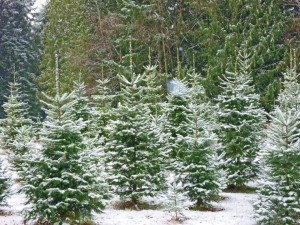
As the year grows old and December days grow shorter, we accept the onset of winter as an inevitable part of nature’s course. The foliage is gone from the trees and now is the time to admire the lovely colours of the bark as they glow in the low winter sun.
Though the weather is unpredictable at this time of year, there is still work to be done in the garden. Take the opportunity to check and maintain your machines and tools and equipment.
Give a good general clean-up of garden sheds, paths and driveways. This is a good time to plant apple and pear trees, raspberries and currants. Prune blackcurrants and deciduous trees, except the plum tree. In a sheltered spot sow beetroot, lettuce, turnips. You can plant tulip bulbs in January.
Give your lawn a winter feed. In mild weather, grass will grow, so raise the blades and mow away.
Plant bare-rooted hedges and shrubs from December to March. Plant shallots and garlic. Create a heather paradise for all-year-round colour. Start with erica carnea and remember small conifers make great companions for heathers. Prune late-flowering clematis. Plant your winter pots and window boxes. Use ornamental cabbage, winter pansies, cyclamen, polyanthus and also some evergreen for a winter show.
Evergreens are manifestations of the plant world in winter when all seems dead. The holly is cheerful with berries and the pampas grass sways gently in the wind. All variegated plants come into their own to brighten our winter scene.
Once again, it is time to select your Christmas tree. There are many synthetic imitations out there but for me nothing is quite the same as the real Christmas tree. I recommend you select from the following – nordmann fir with its lovely shape and dark needles or the best of all – noble fir, with a good shape, and blue spruce. There is also the real Christmas tree introduced into England by Prince Albert in the early nineteenth century – the Norway spruce.
Make sure you secure your tree properly, keep it away from fire and heating appliances. Put the lights on first then decorations and remember to unplug these at night and when leaving the house. Christmas week is the ideal time to put up your tree. It will last longer over the festive season.
Of course, it wouldn’t be Christmas without the beautiful poinsettia, the flower of holy night, brightening up your homes. This Christmas plant dislikes draughts and radiators, let it dry out then thoroughly water it. Give it good light and feed it every ten days with tomato feed and mist the leaves daily.
Other plants to consider are cyclamen. Keep these out of direct sunlight, do not over-water but keep the soil damp and water from the bottom. Christmas cherry likes to stand in a tray of damp gravel and mist it occasionally with lukewarm water. Remember its berries are toxic. The beautiful peace lily should be kept away from bright light and again should be misted regularly. Azalea, which is a big favourite, likes a cool bright room. Plunge its pot in water until it is well soaked and mist it often. Feed it with an azalea fertiliser.
Some pots of daffodils and hyacinths are nice at this time of year. Remember the volume of humidity in the air influences the health of your plants, so water them carefully. Use branches of the lovely rosemary for a beautiful scent.
So we are in the winter months and the shortest day is fast approaching but spring is just around the corner. Soon we will greet the delicate snow drops, the Algerian Irish, the golden caps and the white aconites of the witch hazel.
So that’s the garden and the festive plants taken care of. Let me share some after dinner Christmas trivia with you:
• The Christmas turkey originated in Mexico almost four hundred years ago.
• St. Francis of Assisi introduced the first crib back in the twelfth century.
• Carol singing goes back to the thirteenth century with Jingle Bells composed in 1757.
• There are at least three towns in the United States called Santa Claus.
• The traditional twelve days of Christmas begins at sundown on December 24th and finishes at sundown on January 5th.
• In New York, the Empire State Building tower lights are turned off at midnight but are illuminated until 3 am on Christmas Eve and Christmas day.
So now you know the answers to the questions in the Christmas crackers!
Above: Nordman fir Christmas trees.



